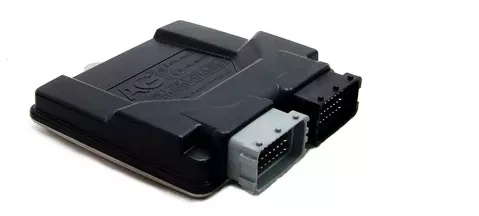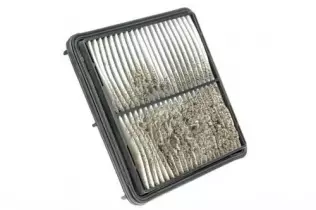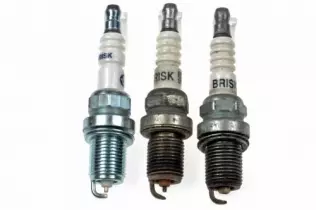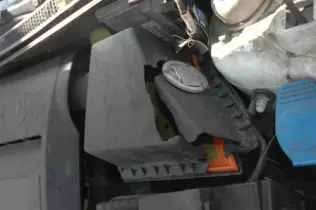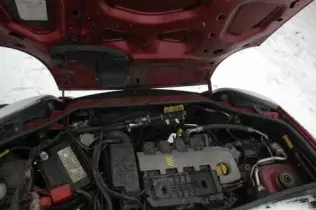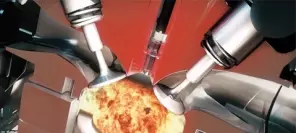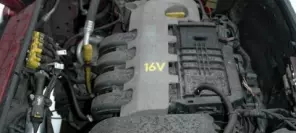- Main page
- Search
- Up to date
- Products
- Technology
- Vehicles
- Video
- Conversion Payback Simulator
Port Injection - Conversion Payback Simulator
Direct Injection - Conversion Payback Simulator
Diesel - Newsletter
Maintain your LPG-powered car properly!
 loading results...
loading results...Things to check when you buy an LPG-powered car
When you buy a used car, you know little about its true history. Chances are the previous owner invested in an oil change or general inspection, but they are slim. Thus, it is worthwhile to „reset” the car's maintenance history by going over a short list of things to see to. Most of them need to be done anyway, regardless of whether the car is powered with autogas or not. What does matter, however, is the order of carrying out subsequent procedures: first, you replace all vital liquids and only then do you proceed to controlling the engine's performance on petrol and assessing the autogas system's correctness of operation. Have a look at our step-by-step guide!
1. Changing oil
As far as engines with high mileage are concerned, old oil should be replaced with same one. If you are unable to determine what lubricant has been used, definitely consult the car's user manual and buy oil recommended by the vehicle's manufacturer. With older and high mileage engines, it is not recommended to quit one type of oil in favour of another (e. g. synthetic or containing a large portion of cleaning agents), as it may lead to washing away of carbon build-up from inside the engine and consequently cause premature engine wear. In the case of low-mileage engines, oil type change matters to a much lesser extent. Choose whatever oil that both meets the car's manufacturer's requirements and is affordable.
2. Changing oil filter
It should be performed every time oil is changed and these both procedures (oil change and filter change) should not be performed separately. The role of the filter is to clean the engine's lubricant while the engine is running. Over time, the filter becomes contaminated and gets „jammed”, gradually losing its ability to filter out new dirt particles from the oil. Ultimately, the filter becomes completely jam-packed and provides no oil filtration whatsoever.
3. Changing air filter
Buying and replacing the air filter is neither costly nor complicated and can be done on one's own, without specialist tools or a mechanic's assistance. The condition of the filter directly influences fuel consumption and engine performance. A dirty, highly contaminated filter limits the amount of oxygen flowing into combustion chambers, resulting in over-rich air-fuel mixture and leading to excessive fuel consumption. Ultimately, significant power deficit can be observed.
4. Changing spark plugs and ignition cables
Worn-out spark plugs and ignition cables often cause LPG-powered engines to underperform. If you have a 2nd generation autogas system (susceptible to intake manifold backfires) fitted on a multi-point injection engine, make sure you keep spark plug replacement intervals, i. e. invest in a new set of plugs every 15-20 thousand kilometres. With a 2nd generation system under the bonnet, spark plugs need regular replacement with no excuses to prevent problems (damaged air filter or its housing, airflow meter or even intake manifold). As for 4th generation autogas systems, strict regularity in terms of spark plug replacement is not that much required – following car manufacturer's recommendations will suffice.
And now for ignition cables. Unless they are permanently fixed to the ignition coil, they need regular inspection, preferably performed while replacing spark plugs. You need to look for physical damage and, optimally, have their resistance tested. If the parameter drops below a required minimum, cables have to be replaced immediately. In case of resistance-wire cables, the resistance parameter value is also influenced by a cable's length.
5. Valve tappet clearance regulation (unless there is a self-regulation system)
Fine-tuning an autogas system would be futile without regulating valve tappet clearance first. You need to stick to intervals recommended by the car's manufacturer when it comes to how often to perform the operation. Indeed, there is a small group of cars in which clearance has to be adjusted slightly more often than recommended, but these are single examples. It is a good practice to minimally raise the exhaust valves' clearance, as they are exposed to higher temperatures than intake valves. Lack of clearance results in a valve's improper closing (never complete), which in turn leads to valve seat or valve head/crown burnout.
The above procedures all refer to any car in general, regardless of whether it is or is not LPG-powered. However, performing them allows to assess the engine's performance and fine-tune it on petrol. Only once you are sure all engine systems, including the high-voltage ignition system, are fully operational can you proceed to LPG system fine-tuning and maintenance.
6. Changing liquid and gaseous stage LPG filters
Both these filters are only to be seen together in 4th generation systems – all other systems need liquid stage autogas filters only. Filter longevity is closely related to engine displacement – the higher displacement, the higher LPG consumption and the sooner filters become worn-out. For standard displacement engines (up to 2 l), a liquid stage LPG filter retains its parameters for approximately 30 thousand km, even considering autogas quality, which sometimes leaves something to be desired even today. A gaseous stage autogas filter should remain operational for approx. 20 thousand km. With high capacity engines (5-6 l or more), filter longevity drops by half.
7. Autogas system's sealing and fixing control
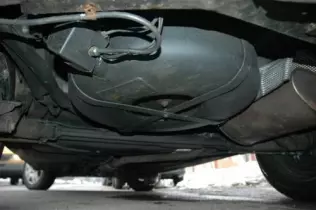 © gazeo.comAutogas components under the car need control, too. Here you can see a broken LPG line fixing.
© gazeo.comAutogas components under the car need control, too. Here you can see a broken LPG line fixing.
Sealing control should be done at least once a year. An autogas system may lose its sealing as a result of gas filter replacement, bodywork repairs, bumper replacement or mechanical interventions by mechanics not trained in the field of servicing LPG systems. A sealing test should be performed during the annual MOT test and we should always make sure it is performed thoroughly, along with a fixing control. The latter is particularly important after the winter as it is possible the cars's underbody scratches against frosted snow and certain elements might become detached from their fixings. While at it, it is reasonable to check and fix corrosion protection as required.
8. Emptying the reducer of condensate deposit
The notion of removing contamination condensate deposit applies to 1st and 2nd generation systems only. There is a plug at the bottom of the reducer which is used for draining the vapouriser of the oily condensate deposit. It builds up from LPG fuel contamination. Excessive condensate build-up leads to reducer malfunctioning and unstable engine working while in idle gear. Condensate should be removed once every 10-15 thousand km. The procedure is most effective when performed on a warm reducer, after the engine has been shut down.
9. Autogas system fine-tuning
The fine-tuning is actually just the final touch once all the above has been done. It has to be performed at the end, because only then can you be sure that the autogas system can be properly adjusted to a well-functioning petrol engine.
The operation should only be carried out by mechanics specialising in autogas systems, since they are the only ones who have the necessary tools and experience to work with LPG-powered engines and do the job right. The fine-tuning process, performed at idle gear and mid-range RPM, normally involves:
- operation assessment on petrol, including exhaust gasses analysis,
- operation assessment on LPG, also including exhaust gasses analysis,
- presets adjustment (using diagnostic software for cars with electronic mixture composition control systems or manually for cars with carburetted engines).
An operation assessment of the autogas system during a short road test is also crucial, although often omitted.
A few years ago it was recommended to have an autogas system maintained every 15 thousand km or so. Today, when technologically advanced 4th generation (sequential gaseous stage LPG injection) systems dominate the market, frequent control and adjustment is not an issue. ECU's keep their presets over long periods of time and work steadily regardless of conditions.
All the procedures described above are performed in order to keep the autogas system operational and reliable for as long as possible. It is definitely worth to have them done regularly, since every unexpected repair, more often than not resulting from negligence rather than hardware reliability issues, is more expensive and time-consuming than a periodical inspection. Taking proper care of your car and its autogas system simply pays back!
